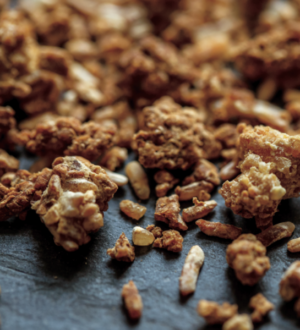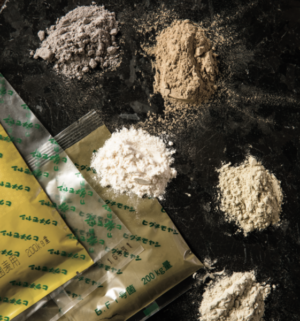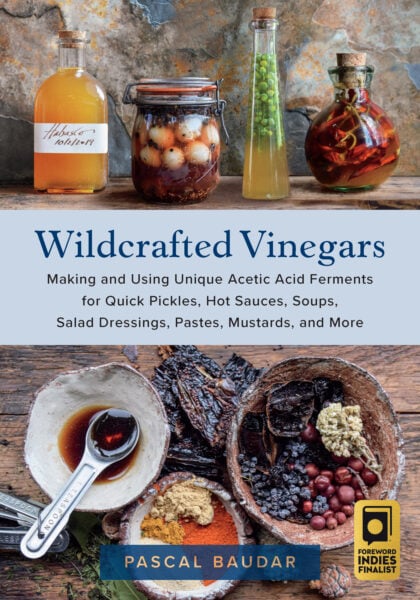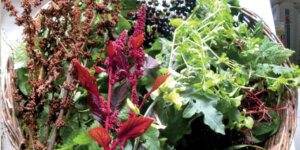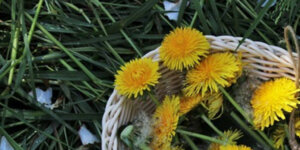Holiday Cookies with a Koji Twist
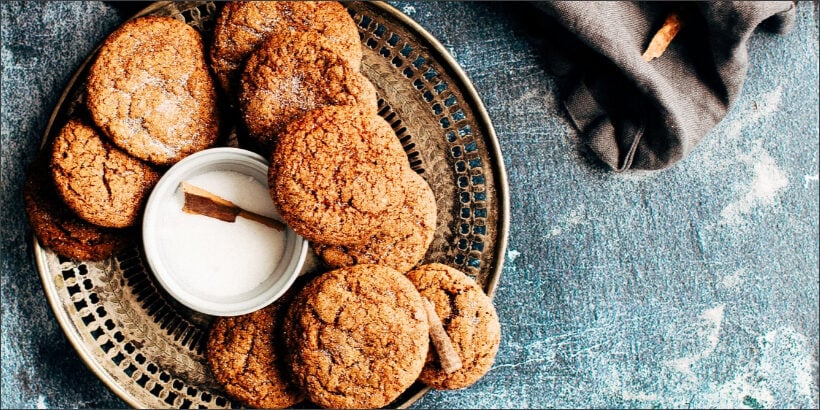
Looking for a twist on a classic cookie? We’ve got you covered!
Chef Markow uses the sweetness and caramelization of koji to add a whole new palette of flavors to a well-loved, traditional cookie: the snickerdoodle. You can go ahead and add this to your holiday cookie list.
Want to know how to grow koji in your own kitchen? Check out this post!
The following recipe is an excerpt from Koji Alchemy by Rich Shih and Jeremy Umansky. It has been adapted for the web.
Chef Anna Markow uses koji not only in desserts such as sorbet (see post “Koji for a Touch of Sweetness: Koji Sorbet”) but also in baked goods such as snickerdoodle cookies. Koji, however, poses a tougher challenge with these, as its aggressive sweetness can threaten to overshadow other elements on the plate. The high sugar content makes caramelization a logical next step, but evenly toasting the grains is tricky. Low and slow is the key, resulting in relatively consistently roasted grains with a fully dehydrated texture. An oven set as low as it can go, about 170°F (76°C) degrees, does the job nicely in about twenty-four hours or so, with intermittent stirring to guard against hot spots. It’s a simple matter to grind completely dried roasted koji in a dry blender (or in very small batches in a coffee or spice grinder), and results in a powder that can be used as a sweetener or flour, albeit one with a very high sugar content. Because of the sugar content, it is a good idea to add a small amount of cornstarch or white rice flour to act as an anti-caking agent.
To use the powder as a flour, it’s best to combine it with other flours, substituting no more than 25 percent of the total amount. The flavor is very strong and will come through even in small amounts. These rice flour snickerdoodles contain 12.5 percent roasted koji powder so as not to compromise the structural integrity of the cookies, and are rolled in the powder instead of the traditional cinnamon-sugar mixture. The powder on the outside caramelizes even further in the oven and adds an irresistible bittersweet quality.
Yields 20 Cookies
Ingredients
- 114 g unsalted butter, room temperature
- 76 g granulated sugar
- 60 g (2) egg yolks
- 5 g vanilla extract
- 174 g white rice flour 28 g roasted koji powder, plus more for coating
- 4 g baking powder
- Pinch salt
Procedure
- Preheat oven to 350°F (176°C)
- Line a baking sheet with parchment paper or a nonstick silicone mat (you may bake all of the dough immediately or keep refrigerated in an airtight container for 2-3 days)
- Beat butter and sugar in a hand or stand mixer with the paddle attachment until uniformly fluffy
- Beat egg yolks one at a time, scraping sides after each yoke. Then beat in vanilla extract
- In a separate bowl, whisk the remaining ingredients
- Add whisked ingredients to mixer and mix on medium-low until combined
- Drop dough by teaspoonfuls into a bowl of roasted koji powder and toss gently to coat
- Arrange dough balls on the baking sheet in a staggered pattern, leaving 1-2 inches (2.5-5 cm) in-between them
- Bake for about 15 minutes, rotating the sheet as needed for an even coloring, until the outside edges of the cookies are firm and the koji powder has fully darkened and caramelized
Recommended Reads
Recent Articles
Foraging wild plants in your area is a great way to shake up your culinary delights. Don’t know where to start? Below are our best foraging posts to get you started on your hunt for wild edibles. Foraging 101: Where to find your bounty We’ve given you descriptions. We’ve given you recipes. We’ve given you…
Read MoreYou can forget about waiting for your wine to ferment, because we have a recipe for dandelion beer that will be ready in just a week! Who knew those weeds in your backyard could make such a fun beverage? The following excerpt is from Pascal Baudar’s Wildcrafting Brewer. It has been adapted for the web.…
Read MoreNothing can be compared to the taste of a fresh, hot slice of pizza that came straight out of a wood-fired oven. By building your own clay wood-fired pizza oven, you’ll have this cheesy delicacy at your fingertips whenever you’re craving it! VIDEO: Building An Outdoor Clay Wood-Fired Pizza Oven Take it from Richard Miscovich,…
Read MoreChances are, you’ve seen cattails growing on the edge of your local lake or stream at least once or twice. Instead of just passing these plants, try foraging for and cooking them to create delicious seasonal dishes! The following excerpt is from The New Wildcrafted Cuisine by Pascal Baudar. It has been adapted for the…
Read MoreGarlic mustard: while known as “invasive,” this plant can be consumed in its entirety and has great nutritional value. Plus, the garlic-flavor is a perfect addition to any recipe that calls for mustard! The following are excerpts from Beyond the War on Invasive Species by Tao Orion and The Wild Wisdom of Weeds by Katrina…
Read More

